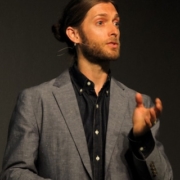The C.R.A.P. Framework for Addressing Workplace Bullshit

Call me naive but I was shocked as an undergraduate to see, in a serious book about George Orwell, an unserious profanity preceding the table of contents. Within the first few pages I read that the author, Christopher Hitchens, dedicated his book “To Robert Conquest — premature anti-fascist, premature anti-Stalinist, poet and mentor, and founder of the ‘united front against bullshit.’” This, in a work of sober historical scholarship, made an impression on me. Naturally, I became curious about what this “united front against bullshit” was but, alas, after some searching, I never found out. This admirable “front” was perhaps an inside joke among literary and humorous friends.
I thought of this recently after coming across another united front against bullshit of sorts—the four co-authors of a new paper, “Confronting indifference toward truth: Dealing with workplace bullshit.” This “Executive Digest,” as the authors call it, offers a hopeful message: that the workplace bullshit that many employees and organizations are “drowning in” can comprehend it, recognize it effectively, act against it, and, perhaps most importantly, preempt it. Together, these comprise what the authors—Ian McCarthy, David Hannah, Leyland Pitt, and Jane McCarthy—apparently couldn’t resist calling the C.R.A.P. framework for addressing “workplace bullshit.”
What is it? McCarthy and his colleagues, following the philosopher Harry Frankfurt, of On Bullshit-fame, tell us that bullshit is not a lie. People utter the former, but not the latter, without regard to truth; the bullshitter is often unaware, whether intentionally or not, of what the relevant facts are. They are just, as we say, “bullshitting,” often in order to persuade others to go along with something—like a plan or an explanation. Lies, on the other hand, are consciously offered instead of the truth; the liar is a calculating deceiver who knows what’s true and obscures it, with language or charts and figures. It is perhaps partly because this distinction so often goes unnoticed that bullshit in the workplace proliferates.
“Most of us would agree that our workplaces are awash with bullshit,” McCarthy and his colleagues write. No facet of work is spared. They contend bullshit crops up during, among other things, committee meetings, vapid announcements, and town-hall assemblies. The same goes for the irritating and confusing decisions managers can make—like how, in 1984, the unmoored executives at Pacific Bell hired Charles Krone, an organizational development specialist, to overhaul the company culture after severing ties to AT&T. Their employees, they thought, were worryingly unfamiliar with the importance of profit and of “taking ownership” and being entrepreneurial. The results of the management training were so dreary—Krone’s method was dressed up in the preachings of a Russian mystic—as to inspire an employee, named Scott Adams, to create a comic strip about his maddening and authoritarian workplace experience, called Dilbert. In his book Business Bullshit, Andre Spicer, a professor of organizational behavior at Cass Business School, wondered, “What prompted Adams to sketch such a sad universe? The answer, of course, is office life itself.”
[Take our very short—anonymous and confidential—workplace bullshit survey.]
The key to recognizing bullshit, then, is to expect it. The danger is allowing this expectation to wear you down—something like mindfulness is needed to sustain it. “While accepting its ubiquity, one must avoid becoming so accustomed to bullshit as to be indifferent to its presence,” McCarthy and his colleagues write. “In other words, it is necessary to develop a healthy cynicism about the possibility of bullshit.” It often masquerades in corporatese, on the whole meaningless language riddled with proprietary or popular acronyms (for instance OKRs, or “objectives and key results”), buzzwords, and other jargon.
Openly valuing critical thinking in organizational settings can help to quell bullshit.
Yet this manner of speaking, in many workplaces, has become so endemic that bullshit may go undetected amid everyday factual communication. Take “sync,” another word for meeting. “Megan’s syncs were filled with discussions of cadences and connectivity and upleveling as well as the necessity to refine and iterate moving forward,” Molly Young writes in a New York magazine article on the “garbage language” she has witnessed corporations nurture. “The primary unit of meaning was the abstract metaphor. I don’t think anyone knew what anyone was saying, but I also think we were all convinced that we were the only ones who didn’t know while everyone else was on the same page. (A common reference, this elusive page.)” McCarthy and his colleagues echo Young’s observations: “When faced with ‘jargonese,’ often people assume that they are missing something, or they confuse vagueness for profundity. The rule holds, however, that if it is not possible to understand what the words in a statement mean, then it is reasonable to suspect the statement to be bullshit.” A good one from Young’s article: “With these key learnings, we can co-create innovative win-wins.”
What to do in the face of such language abuse? McCarthy and colleagues outline four types of responses—speaking up, neglecting, leaving, or acquiescing. Many employees might opt to speak up, especially in a strong “speak-up” culture, before resorting to other responses. “They may themselves provide bullshit-challenging evidence along with alternative statements, and when doing so should be cognizant that simple and coherent bullshit will tend to be more appealing than intricate and complex truths,” McCarthy and his colleagues write. “Employees may also voice by laughing at and mocking bullshit.” Spicer pointed out that sneering at bullshit can be a useful way to “informally show up its emptiness without having to risk a full-frontal face-off with powerful bullshit artists.” When speaking up fails, it becomes more tempting to escape the bullshit, either by exiting the company entirely or requesting a transfer. If that’s not possible—because a fed-up employee still needs the salary, say—she might start to neglect the bullshit. Worse still, she might acquiesce to it, the researchers write, buying into the bullshit despite seeing it for what it is, “out of allegiance to the original bullshitter, or because they find the bullshit personally appealing, or because they genuinely believe the bullshit is somehow good for the organization.”
Most people, to lesser and greater degrees, contribute to the problem of workplace bullshit. This is because psychological biases play a significant role in both the defense against, and the dissemination of, bullshit. People believe the bullshit they like in one moment and call out the bullshit they don’t like in the next.
A 2019 paper in Nature titled “Resolving uncertainty in a social world” makes this crystal clear. It describes why people are motivated to reduce the aversive feelings social forms of uncertainty cause. In short, our aversion to being uncertain arises from our ingrained preference for social predictability—not knowing what people are thinking about us, or how they might act toward us (or in ways that may affect us) is a reliable source of anxiety. People tend to be more anxious when the social-prediction space is vast in any given scenario, meaning there’s many possibilities to consider and track, each with a low likelihood of arising. On the whole we feel better when we can “prune the prediction space,” as the authors, Oriel FeldmanHall and Amitai Shenhav, put it, or in other words have some sense of what’s true, or what will happen (to us). Which is where bullshit comes in: Bullshit can both make us more uncertain about some issue or relationship at work, because of how it clouds the truth, and it can make us feel more certain, because of how the bullshit appeals to what we think or wish to be true.
To preempt the spread of bullshit in the workplace, McCarthy and his colleagues recommend that organizations foster a culture of inviting employees to think critically—which involves a mix of skepticism, curiosity, and rational inquiry. A 2015 study suggests that openly valuing critical thinking in organizational settings can help to quell bullshit. Another way to put this is that organizations should value evidence over opinions and expertise over egalitarianism—the idea, in this context, that everyone has something equally useful to say about a given issue or subject and that crowd-sourcing these views works well. McCarthy and his colleagues say this is likely to generate ideas based more off of intuition than evidence, making such crowd-sourced input a “reagent for bullshit production.”
The same can be said for the use of acronyms and jargon. The authors agree with what Elon Musk once said in a series of emails to his SpaceX employees—that these (ab)uses of language are inherently untrustworthy and signal that colleagues may be doing meaningless work, a category that also includes pointless meetings and committees. Eliminate these, McCarthy and his colleagues say, citing a 2018 paper on the emerging science of meetings. It outlines thoughtful ways organizations can make meetings worth attendees’ time—in short, prepare for them, execute them as planned, and track whether the insights or marching orders from the meeting are being implemented or followed.
It’s worth mentioning that not all bullshit is bad. Earlier this month, on the HumanRisk podcast, Ian McCarthy said he loves being a bullshitter—when he’s out fishing or watching a soccer game with friends. There’s a time and place for it. Bullshitting at work can even be joyful and friendly, as long as it’s transparent. “Not just myself and my co-authors, but others would agree,” McCarthy said, “that organizations and societies that are completely devoid of any sort of bullshit are going to be very boring, dull places.”
Brian Gallagher is the Communications Director at Ethical Systems. Follow him on Twitter @BSGallagher.









